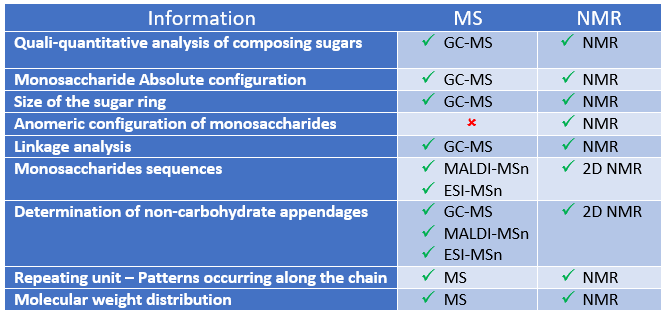Above all, bioinformatics tools are useful for achieving the hard goal of elucidating complex glycans structure, making it easier to interpret the experimental data.
As mentioned above, these molecules’ structural analysis implies a complex operation of bench organic and analytical organic chemistry. Only once extracted and purified the polysaccharide material it is possible to proceed with specific derivatization to determine the nature of the constituting monosaccharide residues and the nature of the linkage to the neighbouring units. (53) This is far from trivial considering the plethora of monosaccharides that occur in nature, especially in the case of bacterial glycans.
In this regard, the home page of Stenutz (www.stenutz.eu) provides a collection of standardised procedures described as practical guides to the structural analysis of carbohydrates. In detail, from the main menu, it is possible to select specific procedures spanning from the purification to the structural analysis of polysaccharides, including a brief description of the method, the flow scheme of the reaction, if available, the list of the necessary reagents, the steps of the procedure and some comments and references.
Once extracted and purified the polysaccharide material, usually by following well-described procedures such as those reported on the website from Stenutz, it is necessary to proceed with the determination of the chemical structure of glycans that aims at defining several items: including i) the determination of the number, the nature and the position of the constituent monosaccharides, along with their absolute configuration; ii) the determination of the ring size of the monosaccharides, distinguishing between furanosidic and pyranosidic rings; iii) the description of the type and the anomeric configuration of the glycosidic linkages; iv) the identification of the monosaccharides sequence and if the glycan has a regular structure, the determination of the repeating unit; v) the identification of noncarbohydrate substituents; vi) the definition of their molecular size.
It is possible to reach all this information by taking advantage of different analytical techniques, mainly Mass Spectrometry (MS) and NMR spectroscopy. Complementing them with bioinformatic tools is a great help to ease the structural analysis (Table 1).

